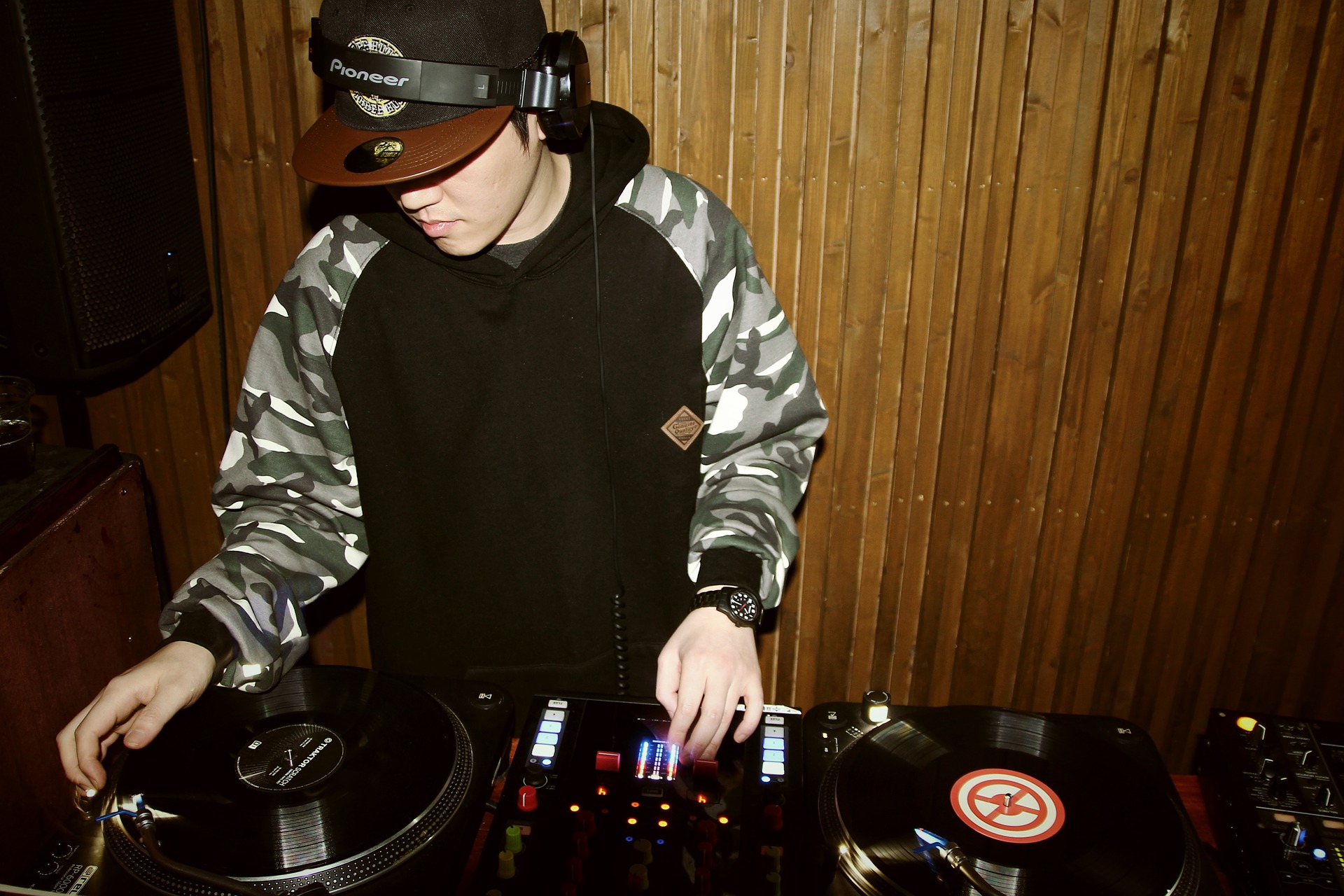
Source: https://pixabay.com/en/dj-hip-hop-turntable-music-records-641805/ Permission: Public Domain.
Introduction
We are covering Unit 17: Electronica and Rap in the final module of this course for a reason: the descendants of the music covered in this module are arguably the most influential current music right now.
But first, technology. The most recent version of our text was created in 2013; since then, the sections on the Digital Revolution, and the blurb in the Outro are, in many ways, already outdated. Think only of Apple Music and Tidal and the changes they have brought to the industry in a few short years – they were not around in 2013. The technology is changing so often, and so quickly, that legislation like CanCon cannot keep up.
Our text covers electronic music at a very surface level, and only up to 1999. In a world where technology has basically taken over our lives and our culture, it is natural that electronic sound making and the sounds of EDM (electronic dance music) would be at the cutting edge of popular music today. EDM rose to massive popularity in the first decade or so of the 21st century, to the point where formerly faceless DJs became stars in their own right. The term EDM is actually an umbrella term for a number of sub-genres of electronic dance music. An interesting summary and analysis of recent trends in EDM and the rise of superstar DJs can be found here and here. That electronic dance beats have been found in the music of hip-hop artists and chart-toppers like Justin Bieber and Rihanna is nothing new; what is interesting is EDM’s influence on genres as seemingly far-removed as country music.
As with anything extremely popular, many have stated that the end of EDM is here. While there may be some truth to the changing culture around EDM, there is no question that electronic music sounds and innovations will continue to play a large role in influencing 21st century popular music.
Similarly, rap and hip-hop are not covered in depth in our textbook, although the coverage does come closer to our current time period. Whether you love it or hate it, or fall somewhere on the spectrum between, it is difficult to deny its centrality in North American popular music today. Our learning materials will delve deeper into the mechanics of flow in rap, as well as how the genre continues to be used to protest systemic racism and inequality in both the US and Canada.
And finally, a note on Unit 20: “A World of Music.” A text such as Popular Music in America does a fine job of providing the highlights of the history of popular music in North America, but most particularly in the United States, at a survey level. What it cannot adequately do is discuss the popular music of the rest of the world in any meaningful, bite-sized way. For this reason, our course will not go there – a thorough study of popular genres in the rest of the world requires a full class to do the topic justice. Feel free to read unit 20 for your interest, but you will not be tested on any material from the unit.
Learning Objectives
When you have finished this module, you should be able to do the following:
- Explain the influence of the digital revolution, going beyond the text to current trends.
- Trace the trajectory of electronica through to current EDM trends.
- Trace the history of rap and hip hop from reggae through to current artists and political movements.
- Differentiate the key genres.
- Identify the key artists and their unique contributions to their genre.
- Define all terminology
Module Instructions
- Please read Campbell Unit 17 and Outro (pages 312-331, and 389-392).
- As you read your textbook, visit the Module 11: Music page to listen to the musical examples.
- Read the Module 11: Learning Material.
- Post a response to one of the challenges if you plan to blog as part of your course assignments (see syllabus for details).
- Join the blog discussions if they interest you.
- Once you have completed your module work for the week, please go into the Blackboard course tools and complete the weekly quiz prior to the deadline.
Key Terms, Concepts, and People
- Digital Technology
- Ambient Music
- EDM
- Rap
- Hip-hop
- Grandmaster Flash
- Public Enemy
- Gangsta Rap
- Tupac
- Eminem
- BLM
- First Nations hip-hop